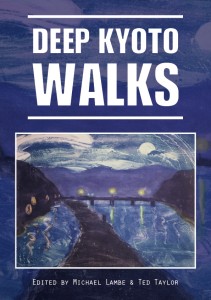If you happen to be in Kyoto on Saint Patrick’s Day and are wondering how to celebrate (other than heading to an Irish Pub and getting hammered) – here’s something new.

I was strolling through the Fushimi Inari area today when I happened to spy this sign.

The sign suggests celebrating Ireland’s most important holiday, with a glass of beer, flavored and colored with matcha tea. I was immediately intrigued. So I went home, changed into some suitably green attire, and cajoled Mewby into coming along with a promise of matcha ice cream.
The tea shop, Ujicha Otani-Chaen, is a 70-year old family business run by a friendly gentleman named Otani Hideyuki. Their main product is fine green tea from the nearby tea-growing fields of Uji. However, also on the menu are both matcha flavored beer, and matcha-flavored non-alcoholic beer. Guess which one I chose…

First Mr Otani mixes up a fresh bowl of matcha. Then he mixes it into the beer. That second part of the process though, is a trade secret, so we can’t show you that here.

And the result is indeed a very vivid emerald green!

There’s definitely a whiff of the shamrock about this glass… But how does it taste?

To my surprise – not bad at all! The beer used at the Otani-Chaen shop is the Japanese salaryman’s beer-of-choice: Asahi. Asahi has a crisp but subtle flavor, so the added bitterness of the matcha tea really does dominate. In other words, if you like matcha tea, you will probably enjoy this beer.

And they were good enough to serve it up with a couple of cubes of cheddar cheese which compliment it nicely.

If you don’t like beer, you can always order a matcha flavored ice cream instead (like Mewby). I’m told it’s very good.

A glass of matcha beer at Otani-Chaen costs 500 yen. Alcohol-free beer is 380 yen. And a matcha ice cream is 280 yen. They also sell a range of fine teas, which make for very good local souvenirs. The shop is just a hop, skip and jump from Fushimi Inari Taisha Shrine. If you walk north on Honmachi Doori Street after exiting the shrine, you will see it on the west side of the street after about 150 meters. Here is a MAP of the location. The shop is open every day from 9.30 – 19.30.
All that remains to be said is – wherever you are in the world on March 17th – a very happy Saint Patrick’s Day to you!

















































 About Sanborn Brown
About Sanborn Brown





